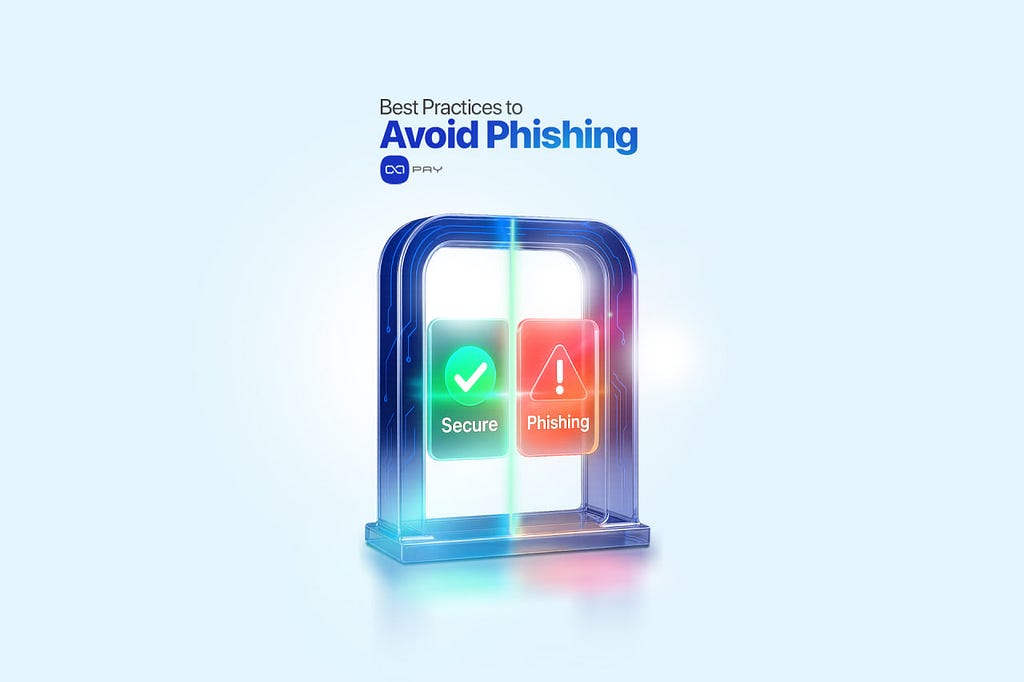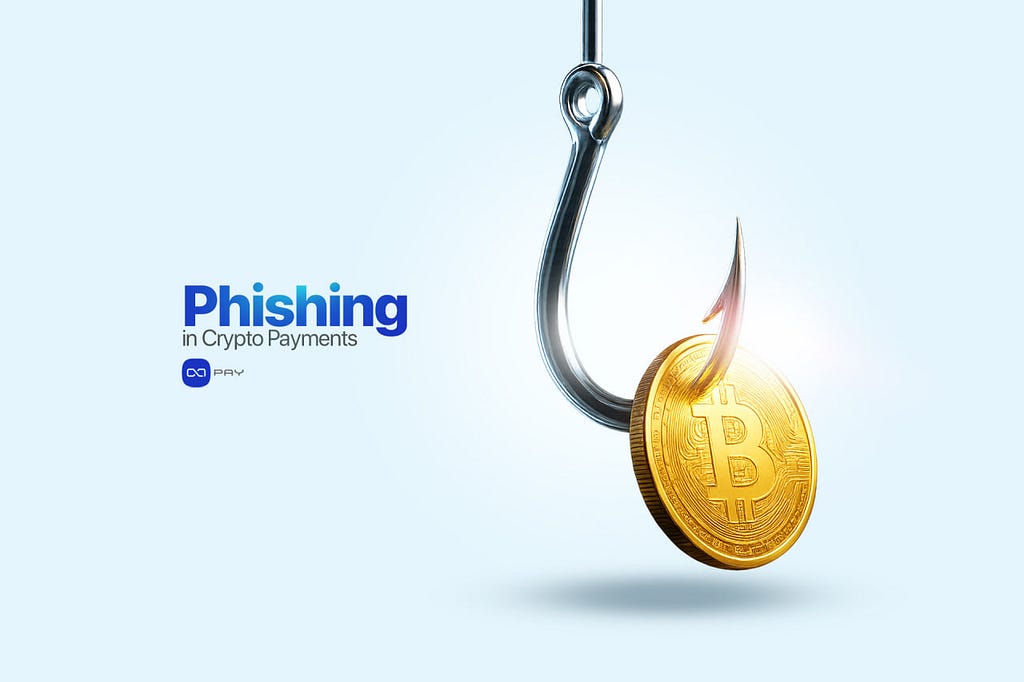Cryptocurrency has transformed the way businesses accept payments, offering speed, borderless access, and lower fees. But along with these advantages comes a new set of risks — phishing attacks. Unlike traditional fraud where refunds or reversals are sometimes possible, crypto transactions are final. Once funds leave a wallet, they cannot be recovered. This makes phishing one of the most dangerous threats for both customers and merchants.
In this article, we’ll explore what phishing in crypto payments looks like, highlight real-world examples, and provide practical strategies merchants can use to stay protected.
What Is Phishing in Crypto?
Phishing is a type of cyberattack where criminals trick users into giving away sensitive information — such as wallet credentials, recovery phrases, or login details — by pretending to be a trusted entity. In the world of crypto payments, phishing often takes the form of:
- Fake websites that mimic payment gateways.
- Emails or messages that look like official merchant communication.
- Malicious wallet applications distributed through app stores.
The goal is always the same: to trick the victim into revealing access to funds. Unlike viruses or technical hacks, phishing exploits human trust — which makes it especially dangerous.

Real-World Examples of Phishing Attacks
Phishing in crypto payments isn’t theoretical; it happens daily. Here are a few well-documented examples:
- Fake payment pages: Customers are redirected to a fraudulent checkout page that looks identical to a merchant’s real payment gateway. Once they enter payment details, the attacker captures them and diverts the funds.
- Malicious wallet apps: Attackers publish counterfeit crypto wallets in mobile app stores. Unsuspecting merchants or customers download them, deposit funds, and later discover that the private keys were stolen.
- Phishing emails from “support teams”: Criminals send emails posing as payment processors or merchant support. These emails often include urgent language like “Your account will be suspended, click here to verify.” Recipients who click the link are asked to log in to a fake dashboard.
- Social engineering of employees: Some phishing attacks don’t target customers but staff. Finance team members may be tricked into “confirming” seed phrases or clicking harmful links, giving attackers internal access.
These cases illustrate why phishing is one of the most common — and effective — attack methods in crypto.
Why Merchants Are Prime Targets
While individuals lose money to phishing, merchants represent higher-value targets. Attackers know that businesses process larger transactions and rely on customer trust.
- Brand reputation: Fraudsters often impersonate well-known merchant services to trick customers.
- Financial access: Finance or operations staff with wallet access are frequent targets.
- Customer trust: If a merchant’s brand is linked to a phishing scam — even if it wasn’t their fault — customers may lose confidence.
For merchants, phishing is not only about direct losses but also about reputation damage and potential compliance issues.
Warning Signs of Phishing Attempts
Phishing attacks usually leave clues. Merchants and staff should be trained to recognize these warning signs:
- Suspicious links: URLs that are slightly misspelled or use unusual domain extensions.
- Urgent messages: Emails that threaten account suspension unless action is taken immediately.
- Requests for sensitive data: No legitimate service will ask for your seed phrase, private keys, or full API credentials.
- Poor grammar and formatting: Many phishing attempts have obvious spelling or design errors.
- Unfamiliar sender addresses: Check whether the email domain truly matches the official provider.
Spotting these signs early can prevent costly mistakes.

Best Practices to Avoid Phishing
Merchants can significantly reduce the risk of phishing by adopting simple yet effective practices. Because phishing attacks rely on human error, awareness and discipline are the strongest defenses.
- Educate employees regularly: Conduct training sessions so staff can recognize suspicious links, fake emails, and social engineering tactics.
- Verify links and emails: Always double-check the sender’s address and hover over links before clicking.
- Use official apps and sources: Download wallets, plugins, and payment integrations only from trusted websites or verified app stores.
- Enable 2FA (Two-Factor Authentication): Add an extra security layer to prevent unauthorized access even if login details are compromised.
- Restrict wallet access with roles: Limit permissions so only authorized finance staff can initiate or approve payments.
- Monitor transactions continuously: Set up alerts and review dashboards regularly to spot unusual activity.
✅ Do’s and ❌ Don’ts Checklist
✅ Do’s
- Verify sender emails and URLs carefully
- Train staff on phishing awareness
- Use 2FA and role-based access controls
- Download wallets/plugins only from official sources
- Monitor wallet activity and transaction logs regularly
❌ Don’ts
- Never share seed phrases or private keys
- Don’t click on “urgent account suspension” messages
- Avoid public Wi-Fi for accessing wallets
- Don’t store login details or recovery phrases in plain text or cloud notes
How OxaPay Helps Merchants Stay Protected
While individual best practices are important, merchants benefit greatly from using a secure crypto payment gateway that minimizes exposure. OxaPay provides built-in protections against phishing risks:
- Transactions and balances are visible only inside a secure dashboard.
- No seed phrases or private keys are ever required from merchants.
- Real-time transaction monitoring reduces reliance on manual verification.
- Integrated tools for swaps, payouts, and reporting mean merchants never need to share wallet credentials externally.
By reducing manual handling of sensitive data, OxaPay lowers the risk of phishing attacks and helps merchants keep customer payments safe.
Conclusion: Stay Vigilant, Stay Protected
Phishing remains one of the most effective attack methods in crypto payments because it targets people, not technology. For merchants, the consequences can include not only financial losses but also damaged credibility and lost customers.
The best defense is awareness, strict security practices, and reliance on professional tools that reduce manual risks.
👉 If your business is ready to accept crypto payments securely, use OxaPay Crypto Payment Gateway. With OxaPay, merchants can manage payments, monitor transactions, and protect customer trust — all in one secure, easy-to-use platform.
Phishing in Crypto Payments: Real Examples and How to Avoid Them was originally published in The Capital on Medium, where people are continuing the conversation by highlighting and responding to this story.
